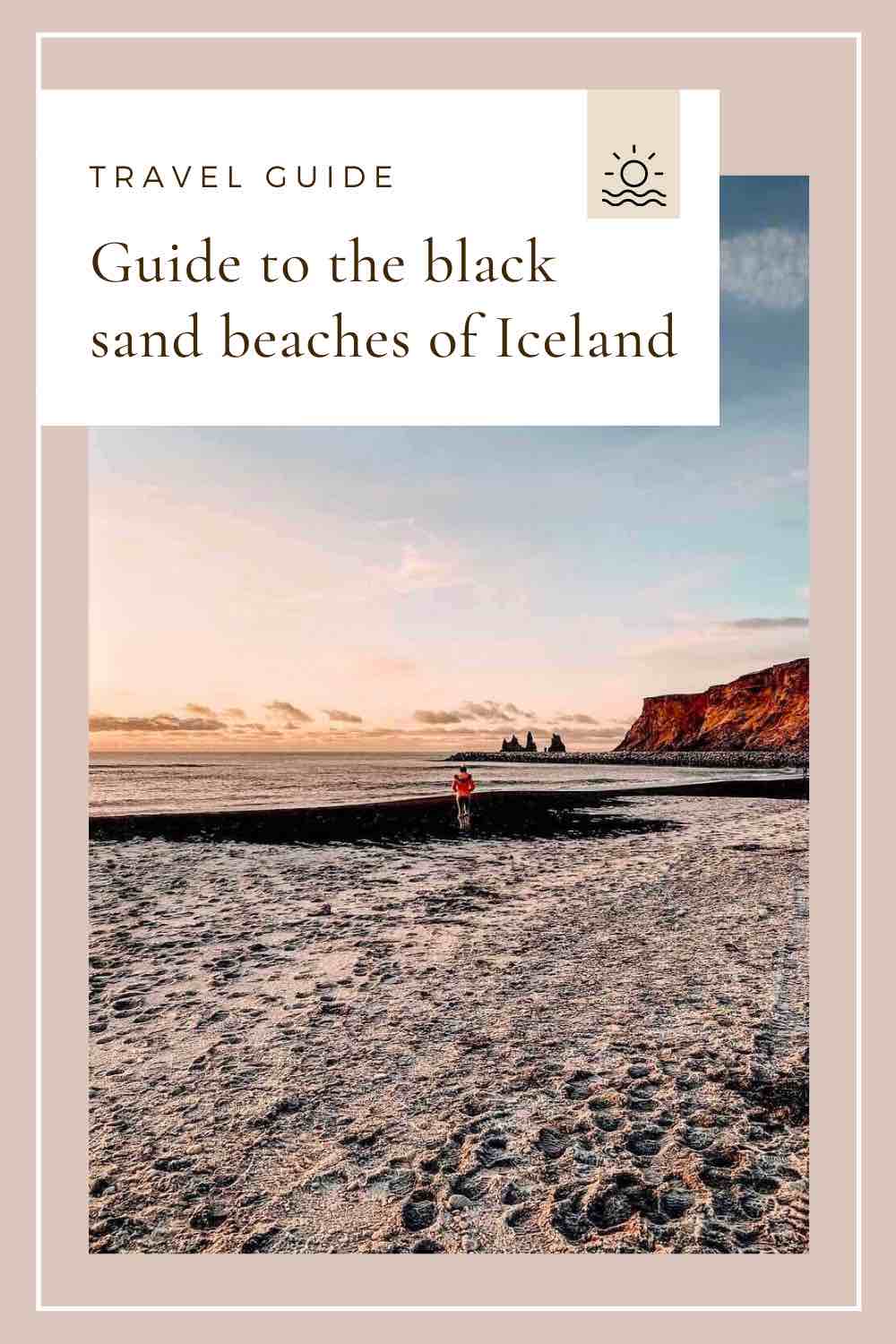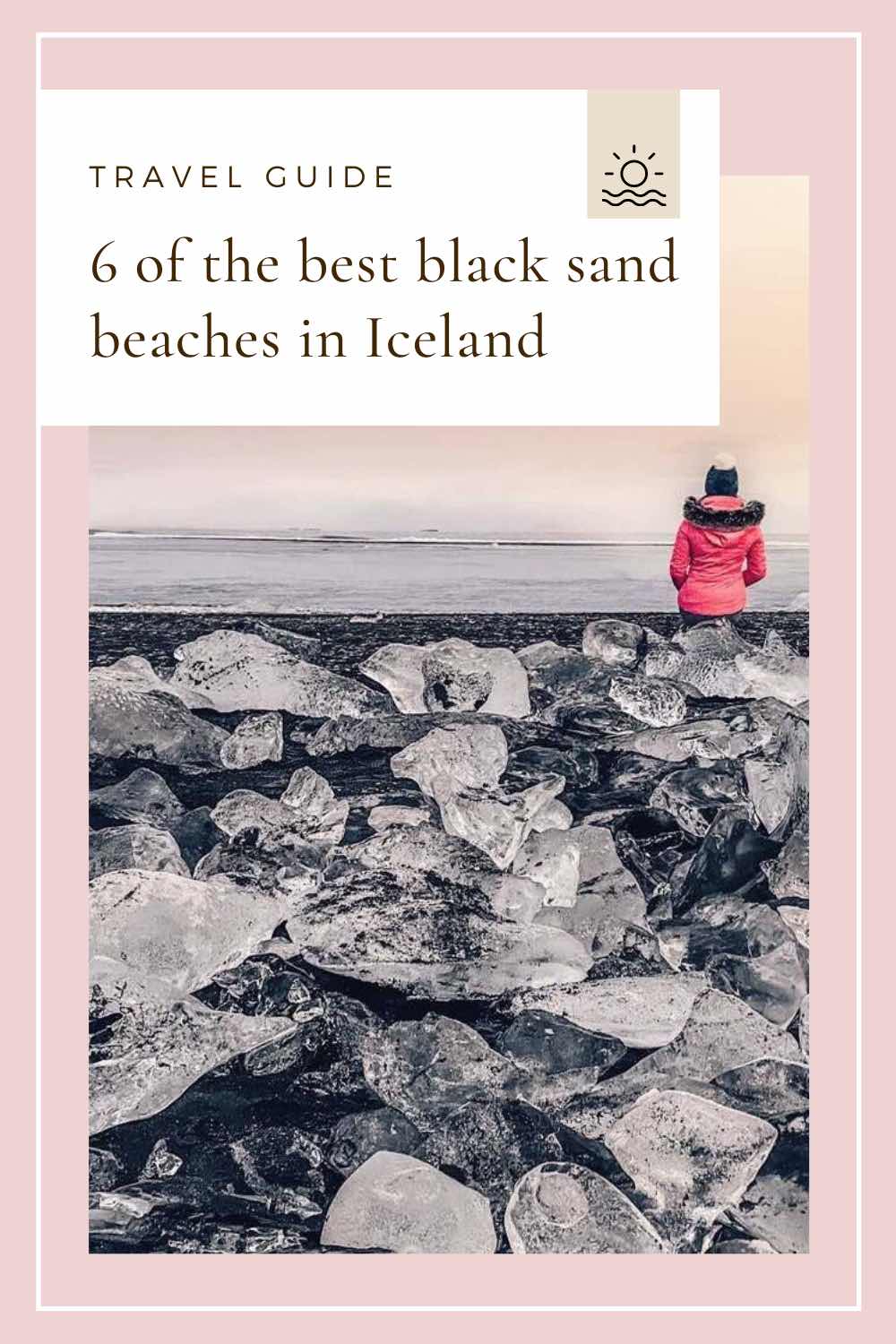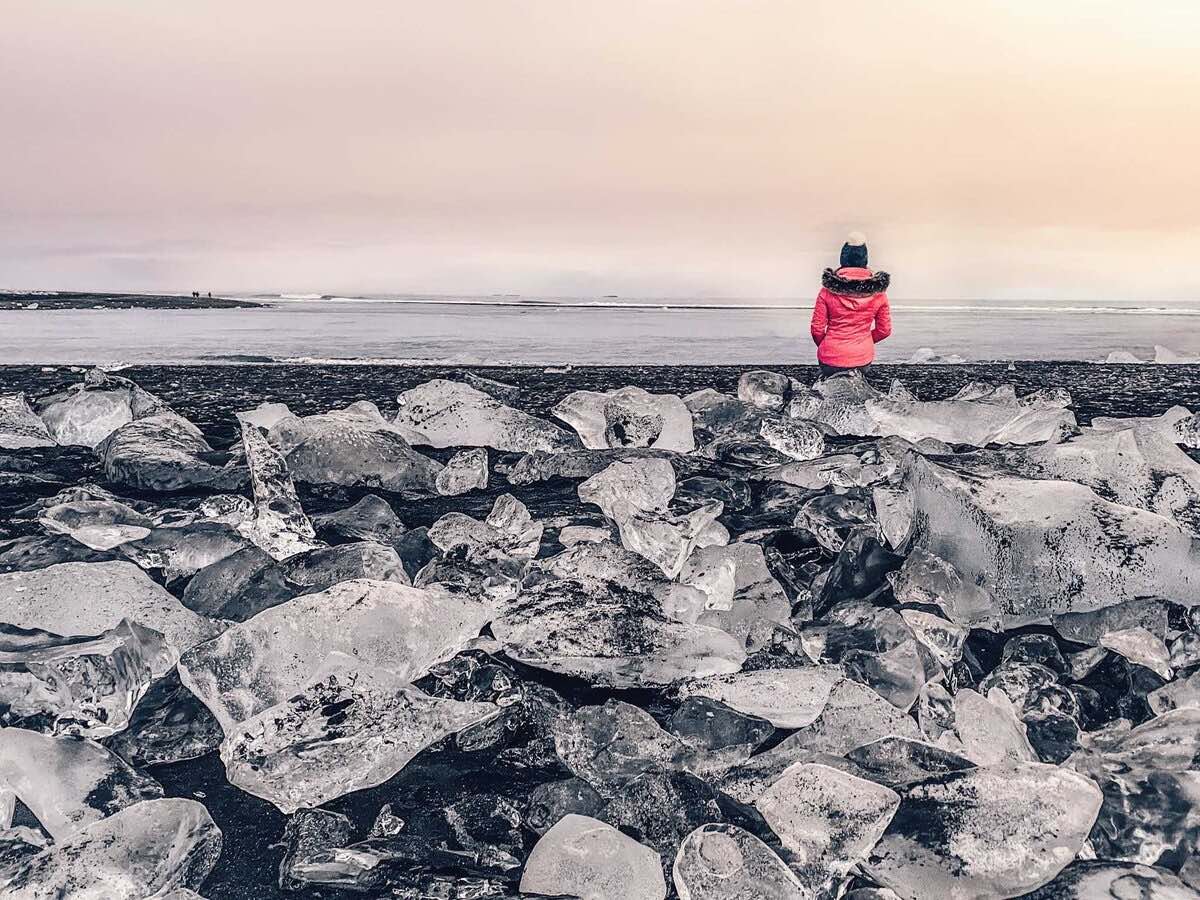
I have no doubt that visiting the black sand beaches of Iceland is a must for many travellers who visit the Nordic country at the top of Europe.
Believe me when I say that spending time at a spectacular black sand beach in Iceland can lead to the best photo opportunities of your holiday! Especially where chunks of glacial ice or an abandoned plane wreck provide a stunning contrast.
I adore Iceland and I have used my own experiences of adventuring in the country to bring you my handpicked guide to the best black sand beaches in Iceland, plus tips for visiting them.
What causes a black sand beach in Iceland?
The sand is black due to Iceland’s widespread volcanic activity, and was once red hot lava.
When a volcano has erupted, the lava is quickly chilled and solidified by hitting the icy waters of the ocean. Over time, this has broken down into sediment – or the distinctive black sand.
The six beaches featured in my guide each have their own charms, and I assure you that all are dramatic and compelling.
Featured in the Game of Thrones series, Reynisfjara boasts towering rock stacks, while at Dyrholaey a rocky ‘bridge’ stretches out to sea. Diamond Beach is famed for the chunks of glacial ice that wash up on the shore.
While Solheimasandur and Djúpalónssandur are home to plane and shipwreck remains, and Stokksnes has ‘Batman mountain’ as a backdrop.
Best time of year to visit Iceland’s black beaches
The best time of year to visit does vary, but the depths of winter is often best avoided due to icy roads and the likelihood of storms.
I visited Iceland in November, when there was a gorgeous golden glow reflecting off the waves all day. Where weather may be of prime importance, this is mentioned in the section for the beach concerned.
The same applies to safety warnings, which I’ve also drawn attention to under each heading. In general, I’d advise steering well clear of the water and heed any local advice.
It’s worth noting that several of these beaches are close together, making it simple to visit two or more during one trip.
Iceland’s black sand beaches
1. Reynisfjara
Location: Near Vík í Mýrdal on the south coast
How to get there: Drive from Reykjavík in about 2.5 hours, via Route 1
Where to park: Car park in front of cafe and toilets
Top tours to book which include Reynisfjara:
- From Reykjavik: South of Iceland Full-Day Trip
- Full-Day South Coast, Black Beach & Waterfalls Tour
- Glacier Hike, South Coast Waterfalls & Black Sand Beach
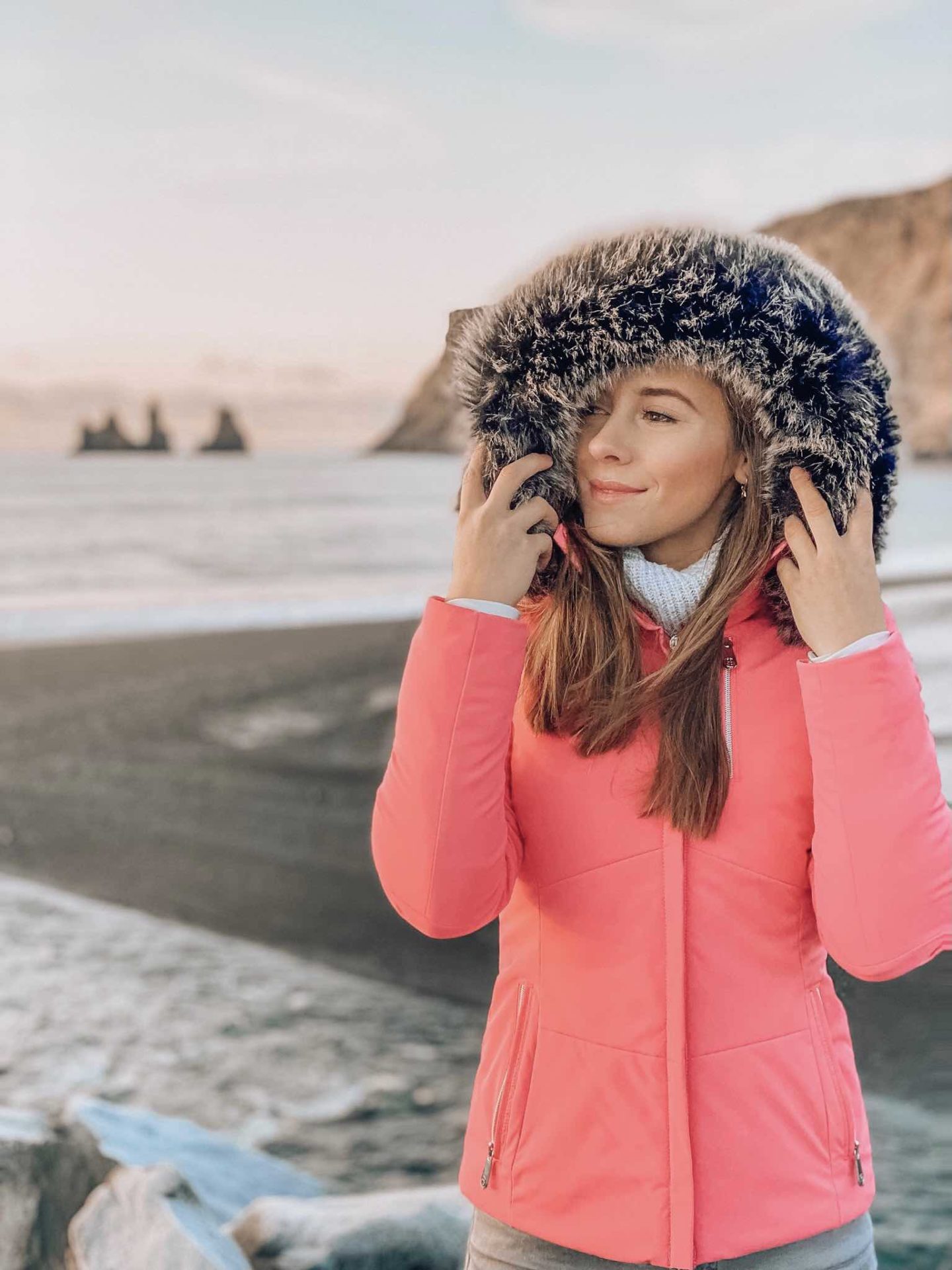
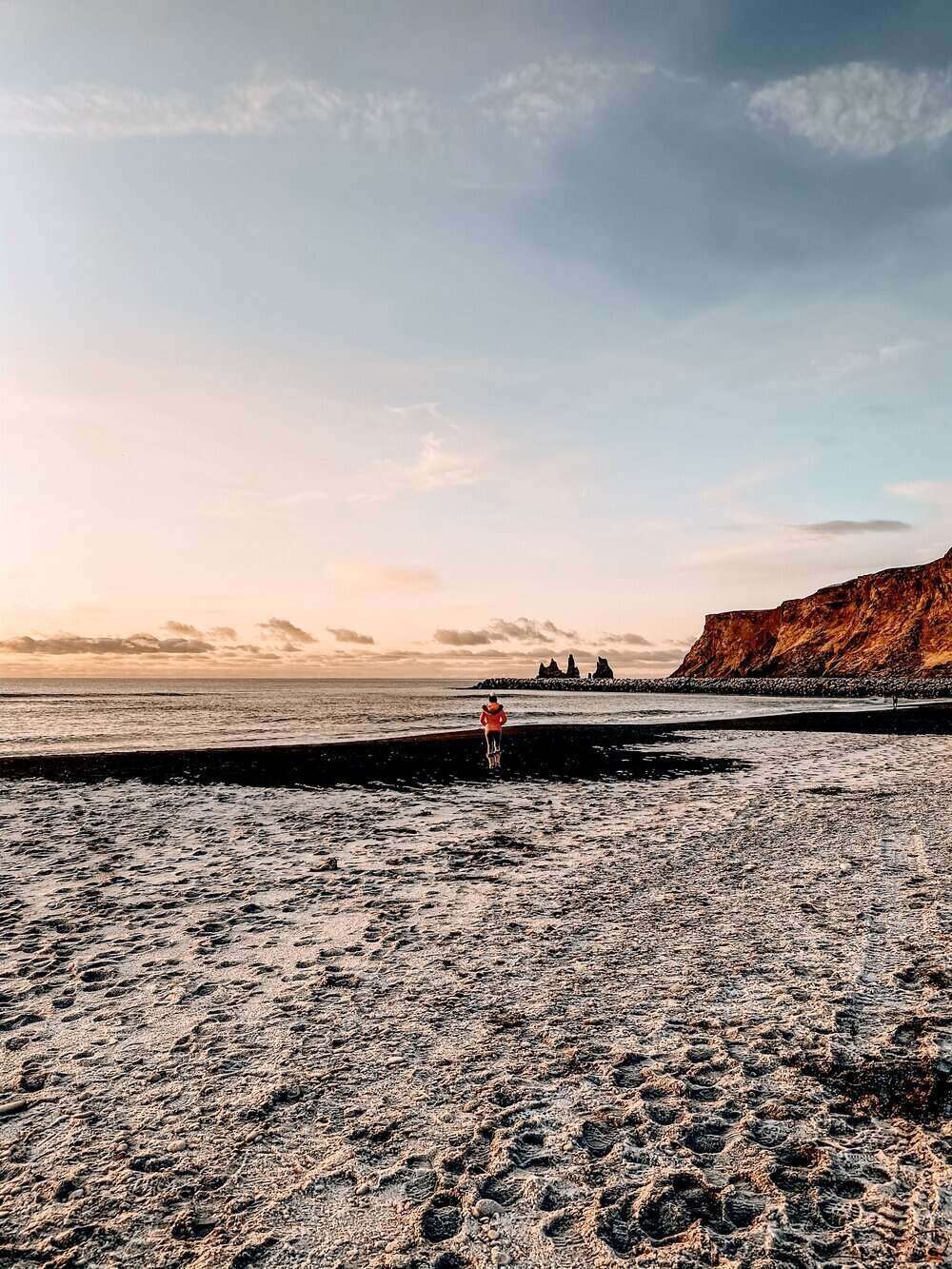
Reynisfjara black beach is without doubt Iceland’s most famous – and my personal favourite of the black sand beaches in Iceland.
Once voted one of the best beaches to visit in the world, it is famed for the distinctive stacks of rock that stand in the sea, close to the shoreline.
The chance to see these dark basalt stacks –Reynisdrangar – is one of the reasons why visitors head here.
Back on land, the coastline is also fringed by the dramatic, dusky peaks of and around Mount Reynisfjall.
Parts of Game of Thrones series seven were filmed here, with the brooding landscape acting as a striking backdrop.
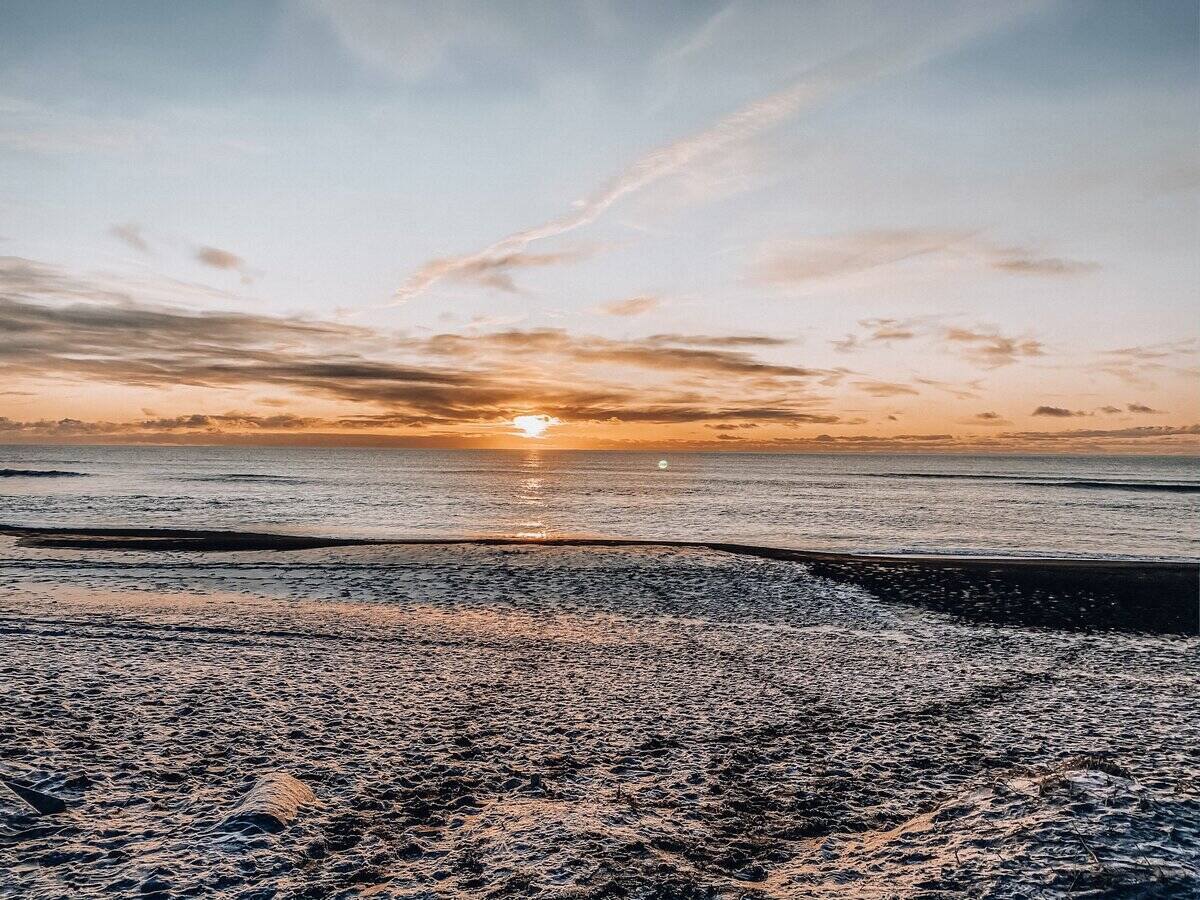
The Reynisfjara beach location may also contribute to its popularity, as it is situated just 112 miles (180km) from the capital, Reykjavík.
It is positioned close to Vík í Mýrdal, a small fishing village on the south coast of Iceland, and is easy to reach from the Icelandic Ring Road (also known as Route 1).
In the interests of safety, visitors should be aware of the powerful, crashing waves that can occur at Reynisfjara beach.
I’d advise keeping at least 30 metres (100ft) between you and the sea, and always face the ocean so the ‘sneaker waves’ can’t catch you out.
Swimming isn’t advisable either, due to rip currents that have in the past been fatal.
2. Diamond Beach
Location: Near Jökulsárlón ice lagoon on the south east coast
How to get there: Drive from Reykjavík in about 4.5 hours, via Route 1
Where to park: Car park next to Diamond Beach
Top tours to book which include Diamond Beach:
- Iceland: 3-Day Golden Circle, South Coast, & Glacier Tour
- From Reykjavik: Jökulsárlón Glacier Lagoon Full-Day Trip
- Reykjavík: 2-Day Tour with Icebergs, Glaciers & Waterfalls

Diamond Beach in Iceland forms part of the Breiðamerkursandur glacial plane.
In Iceland, this black sand beach makes a particularly stunning sight when large chunks of ice wash up on the beach, contrasting most photogenically with the black sand beneath.
Hence the name, the icy rocks look like rough diamonds scattered across the shore – and trust me, it is breathtakingly beautiful.
Lovers of wildlife also flock to Diamond Beach to see the resident seals, or to spot black and white killer whales or orcas in the ocean.
While Diamond Beach is safer than Reynisfjara, I’d still advise considering the dangers posed by the large fragments of ice and freezing cold water.
The former should never be climbed: they have sharp edges and slippery surfaces, and could either be pulled out to sea by the current or flipped over by the tide.
Hypothermia has also caused problems in the past, and there are huge fines for anyone who tries to swim here. Although why anyone would want to swim in such unforgiving, icy waters is totally beyond me!
Insider travel tip: While in the area, don’t miss Jökulsárlón ice lagoon – it’s just 250 metres from Diamond Beach.
3. Solheimasandur
Location: Near Jökulsá river and Vík í Mýrdal on the south coast
How to get there: Drive from Reykjavík in about 2.5 hours, via Route 1
Where to park: Car park just south of the road
Top tours to book which include Solheimasandur:
- South Coast: ATV Quad Bike 2-Hour Safari
- From Reykjavik: South Coast Tour & DC-3 Plane Wreck
- From Reykjavik: South Coast, Plane Wreck, & Beach ATV Tour
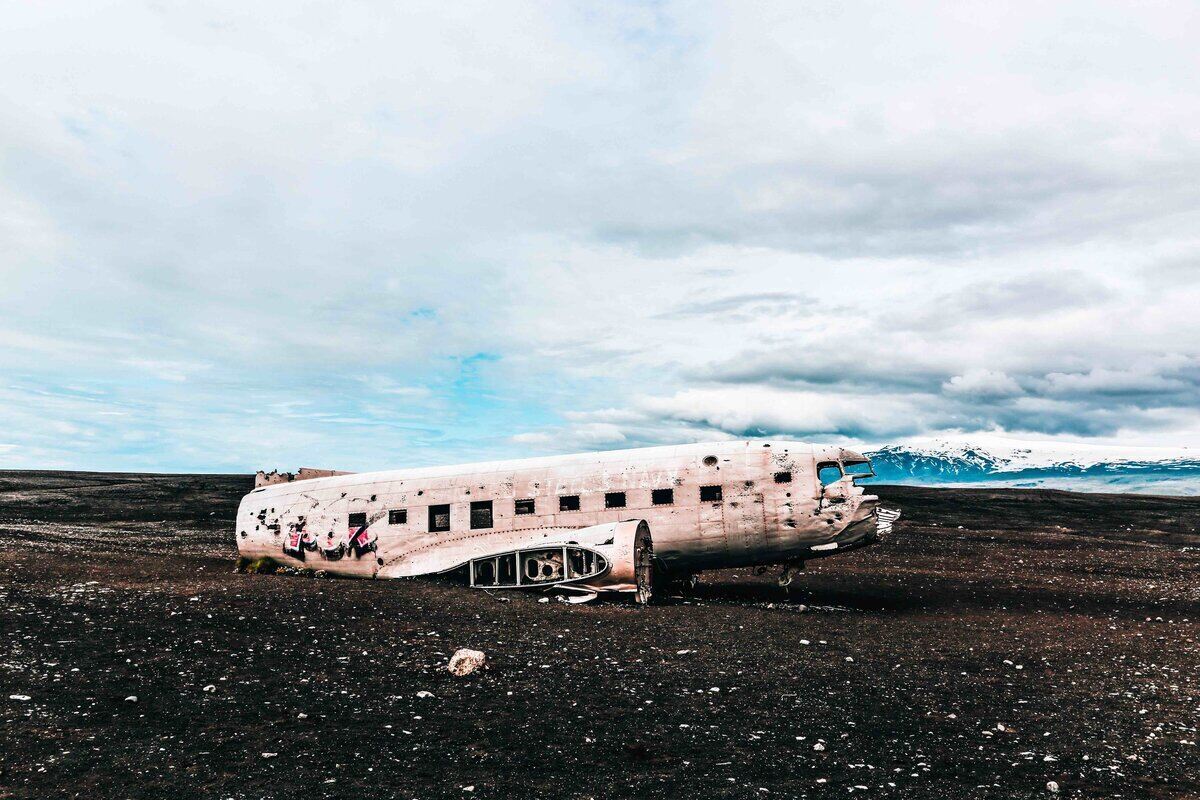
Fans of sci-fi will not want to miss Solheimasandur black sand beach. It’s famous for a wreckage that occurred here in 1973, when a US navy plane crashed onto the black sands.
Fortunately all survived, and the plane has been left exactly where it landed. The remains make for some fabulous photo opportunities.
As with Diamond Beach and the chunks of glacial ice, I think it’s the contrast of the faded white plane against the black sands that really gives this location its dramatic atmosphere.
If you can visit at sunrise or sunset, the images created are absolutely breathtaking.
In the past, people used to drive right up to the plane, but this has now been prohibited for safety reasons.
Even vehicles with four wheel drive could become immobilised by the soft, yielding terrain. Keeping the area free of cars also helps to protect local flora – but this does mean there’s a bit of a walk to get to it.
The weather can pose a challenge here, during winter in particular, as there can be deep snow. So I’d advise caution in adverse weather.
At any time of year, visiting is not recommended during windy weather as you could be struck by a sandstorm.
4. Stokksnes
Location: Near Höfn on the south east coast
How to get there: Drive from Reykjavík in about 6 hours, via Route 1, or fly to Hornafjordur
Where to park: Car park by the Viking cafe
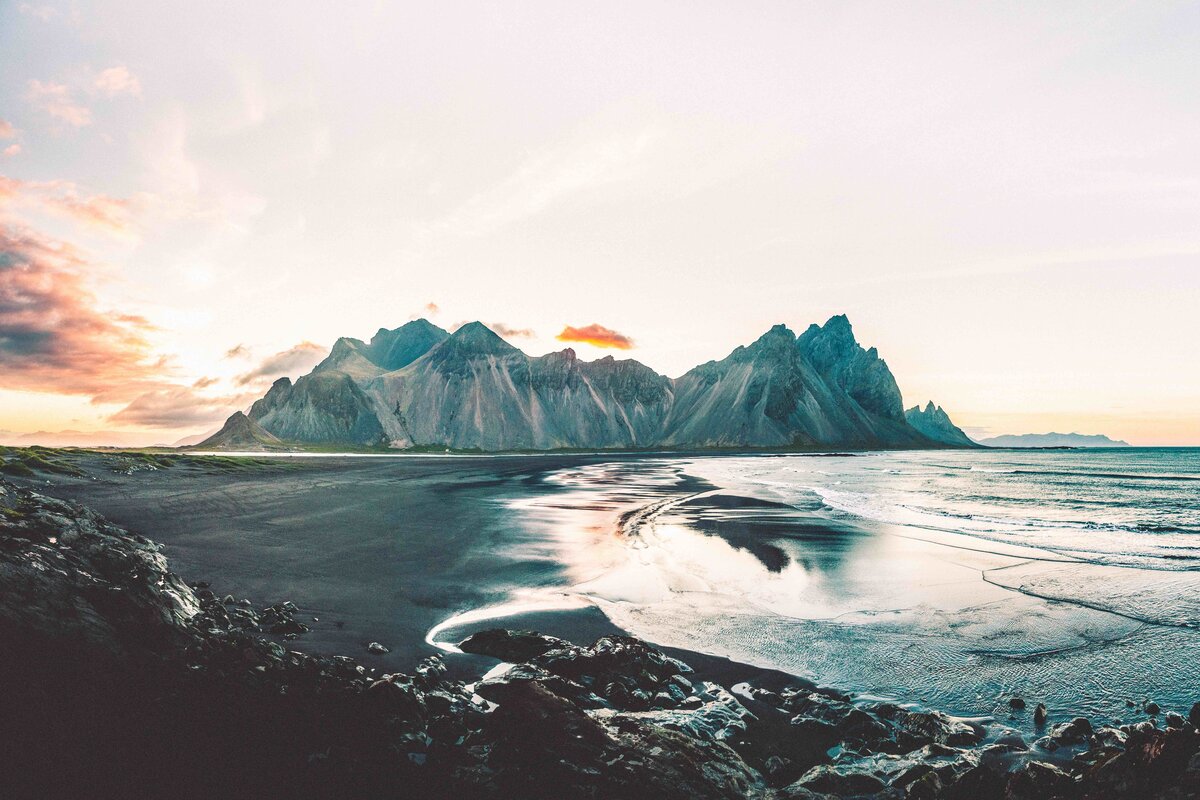
Stokksnes black beach is found in south east Iceland, and is home to the Vestrahorn mountain.
Its majestic peaks rise to around 450 metres (1500ft) above sea level. Due to its shape, it is sometimes referred to as ‘Batman Mountain’, and I can see why!
There is also one of the best black sand beaches in Iceland here. The lofty peaks rising up behind the blue waters of the lagoon, fringed by the black sands, make for unparalleled photo opportunities.
This is an unspoiled and entirely natural landscape, formed by the movements of the earth over lengthy periods of time.
When the weather is calm, some impressive reflections are often visible in the water.
Jökulsárlón ice lagoon is around an hour’s drive from Stokksnes, so I’d recommend planning to visit Diamond Beach while in the area if you also want to see that.
Note that an entry fee is payable at Stokksnes beach, as the site is privately owned. At the time of writing this is about USD $6.
5. Dyrholaey
Location: Near Vík í Mýrdal on the south coast
How to get there: Drive from Reykjavík in about 2.5 hours, via Route 1
Where to park: Upper and lower car parks – upper may close during nesting season
Top tours to book which include Dyrholaey:
- From Reykjavik: South Coast & Glacier Hike
- From Reykjavík: South Coast Waterfall, Black Sand & Ice tour
- From Reykjavik: Iceland 4-day South and West Coast Tour
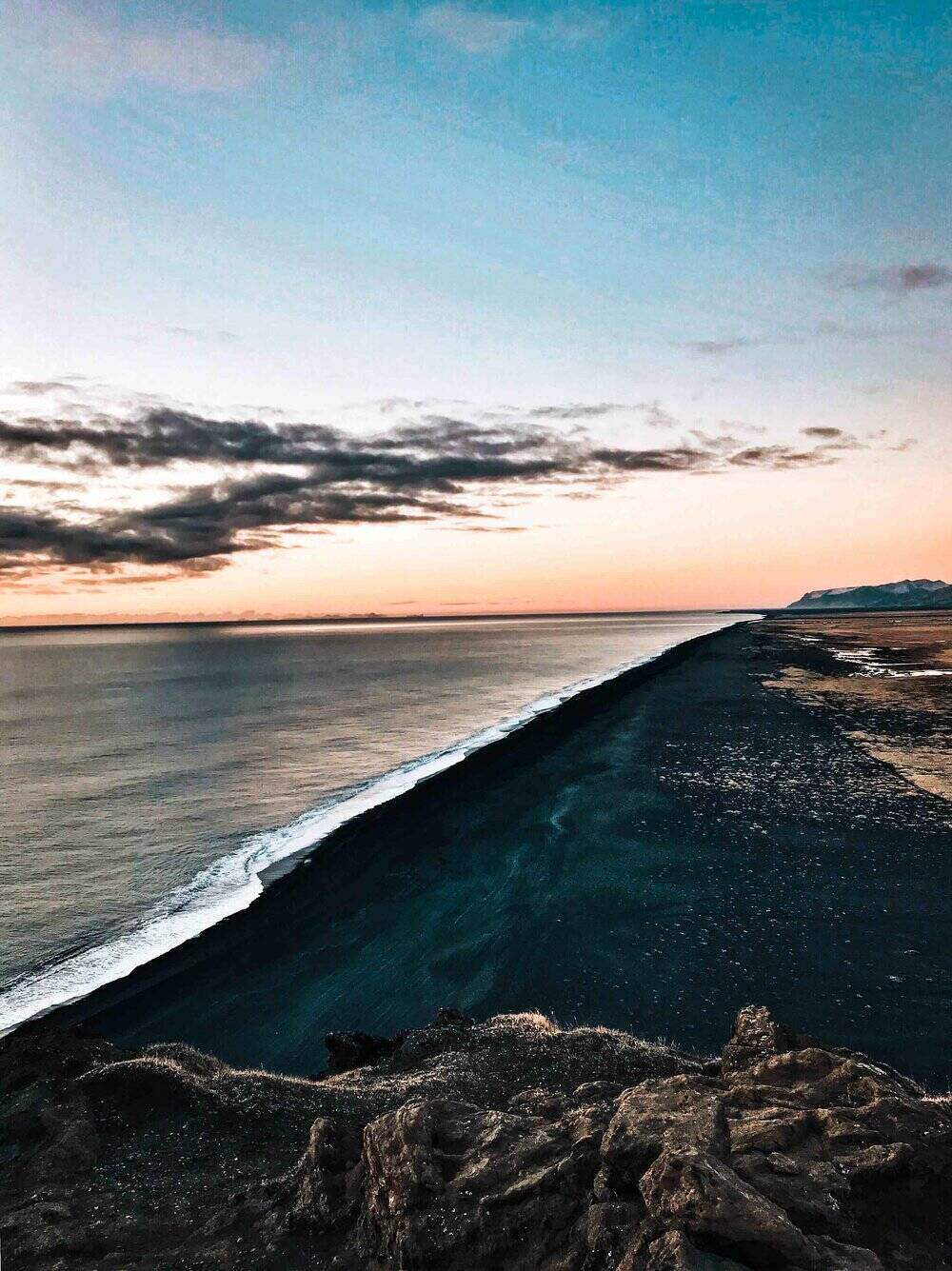
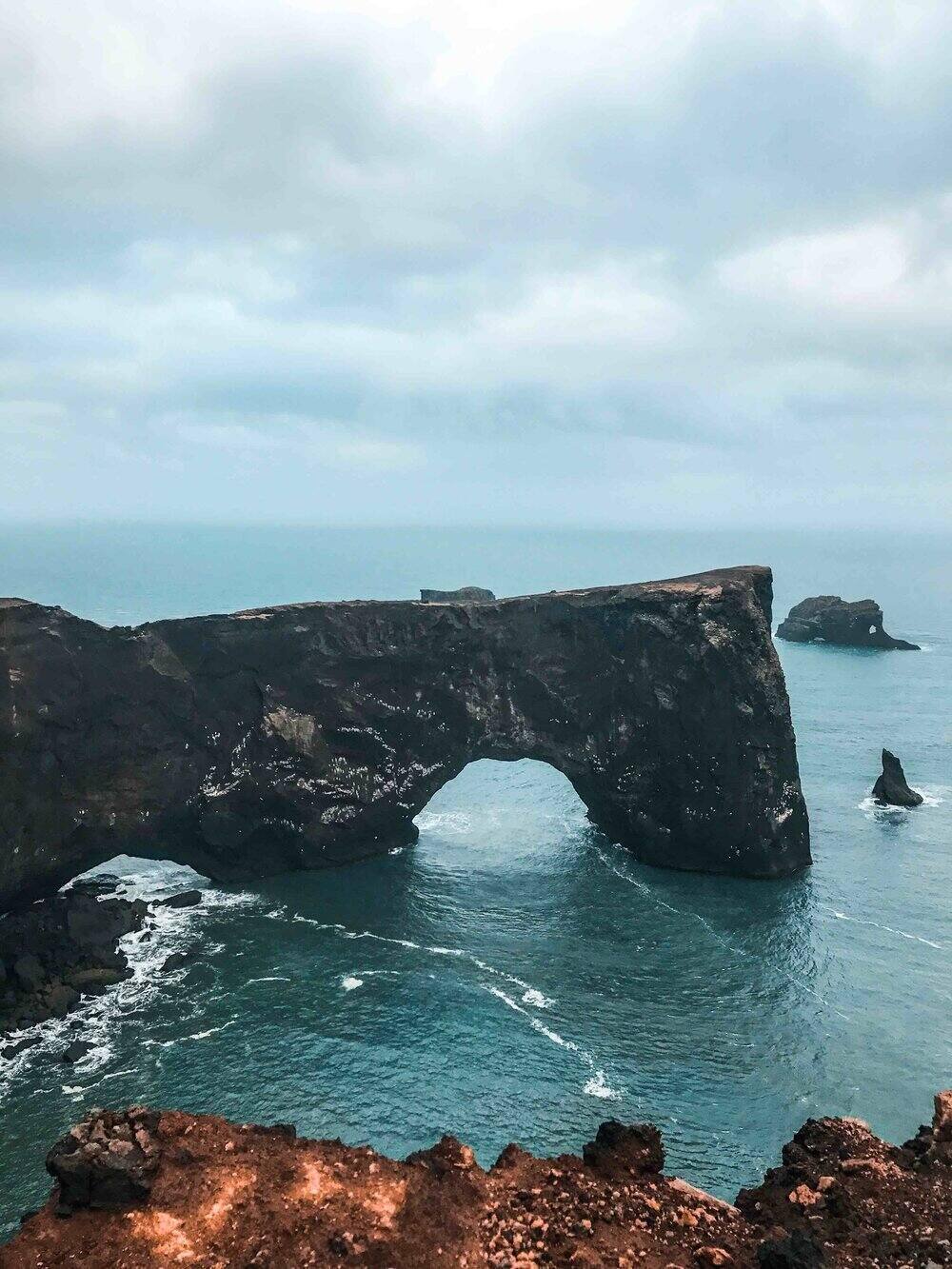
Dyrholaey black sand beach lies to the west of Reynisdrangar. As with those brooding basalt stacks, there is an interesting rock formation stretching out to sea here.
Dyrholaey was once an island, and the name literally means a hilly island with a doorway.
The rocky finger-shaped peninsula here is still joined to the land, and its steep, dark cliffs drop dramatically to the ocean below. An almost perfect arch has been formed at the bottom, curving gently as the waves crash below.
I’d say summer is the best time to visit Dyrholaey if you want to see the resident birdlife. Puffins and arctic terns nest here. But stay well clear of the latter as they can become aggressive if feeling threatened.
There is also limited beach access during nesting season (normally during May to June) so you will need to walk a little further if visiting then.
Again, Dyrholaey is near Vík í Mýrdal, so I’d suggest visiting Solheimasandur, Reynisfjara and Dyrholaey in one trip.
6. Djúpalónssandur
Location: On Snæfellsnes peninsula on the west coast
How to get there: Drive from Reykjavík in about 2 hours and 45 minutes
Where to park: Car park and toilets at western end of peninsula
Top tours to book which include Djúpalónssandur:
- From Reykjavik: Snæfellsnes Peninsula Full-Day Tour
- Reykjavik: Snaefellsnes Peninsula and Kirkjufell Day Trip
- Reykjavik: Snaefellsnes & Mt. Kirkjufell Guided Minibus Tour
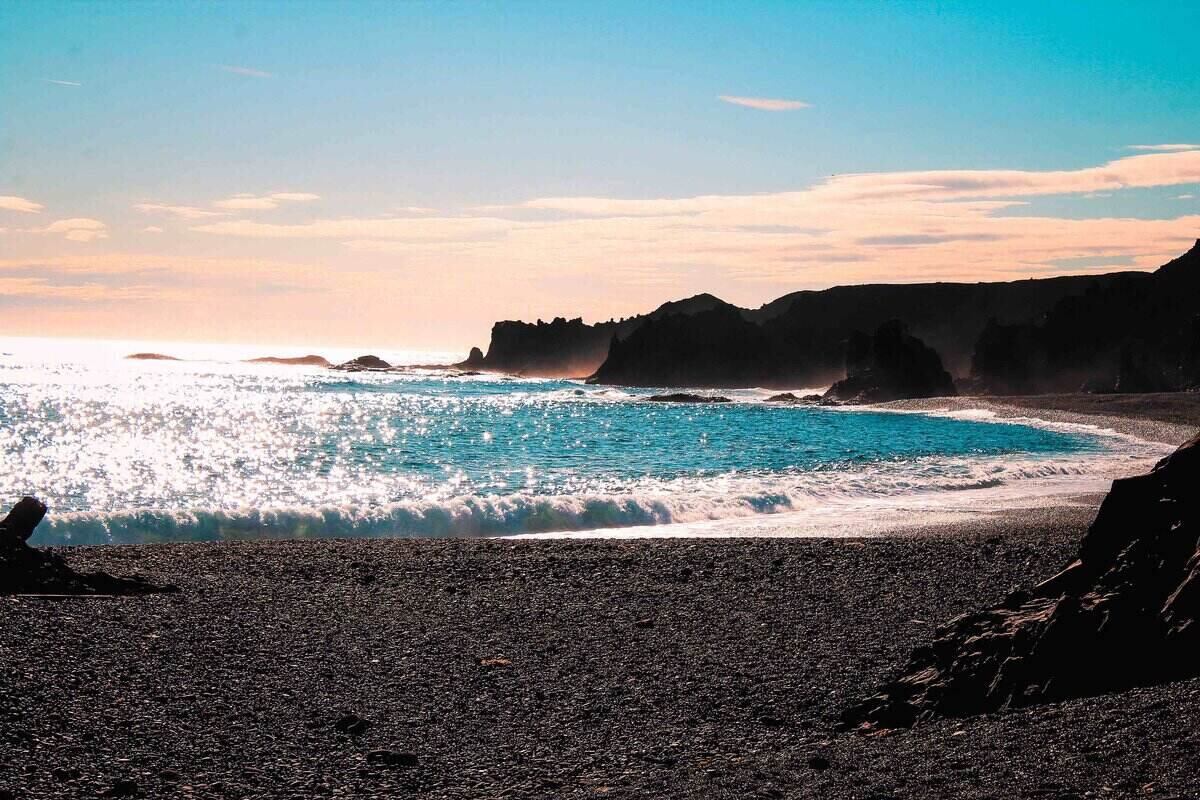
Now uninhabited, Djúpalónssandur beach in Iceland was once a fishing village. The beach is a gracefully curving sweep of black sand, framed by rugged cliffs – and I think it’s well worth a visit if you’re in the area.
Now it is known for the lifting stones here. These stones comprise four large, rounded pebbles that vary in size. They were formerly used to test the strength of the fishermen before they went out to work on the sea.
The Icelandic name of each stone roughly translates as ‘useless’, ‘weakling’, ‘semi strong’ and ‘fully strong’.
The rusting remnants of a shipwreck from 1948 can also be seen on the beach; the vessel involved was a trawler from Grimsby.
While five survived, 14 died and the relic remains as a monument to those who lost their lives.
As at Reynisfjara, Djúpalónssandur experiences strong currents, stormy waters and those ‘sneaker waves’. So keep your distance, particularly during inclement weather.
If you have any favourite black sand beaches in Iceland, do let me know in the comments! In the meantime, I’d recommend browsing and booking the best tours in Iceland:
Planning a trip to the Land of Fire and Ice? Discover my pick of the best luxury hotels in Iceland or read my guides to visiting the Blue Lagoon and the Golden Circle in Iceland.
For some fine dining, have a read of my guide to the best Michelin restaurants in Iceland.
Pin it:
